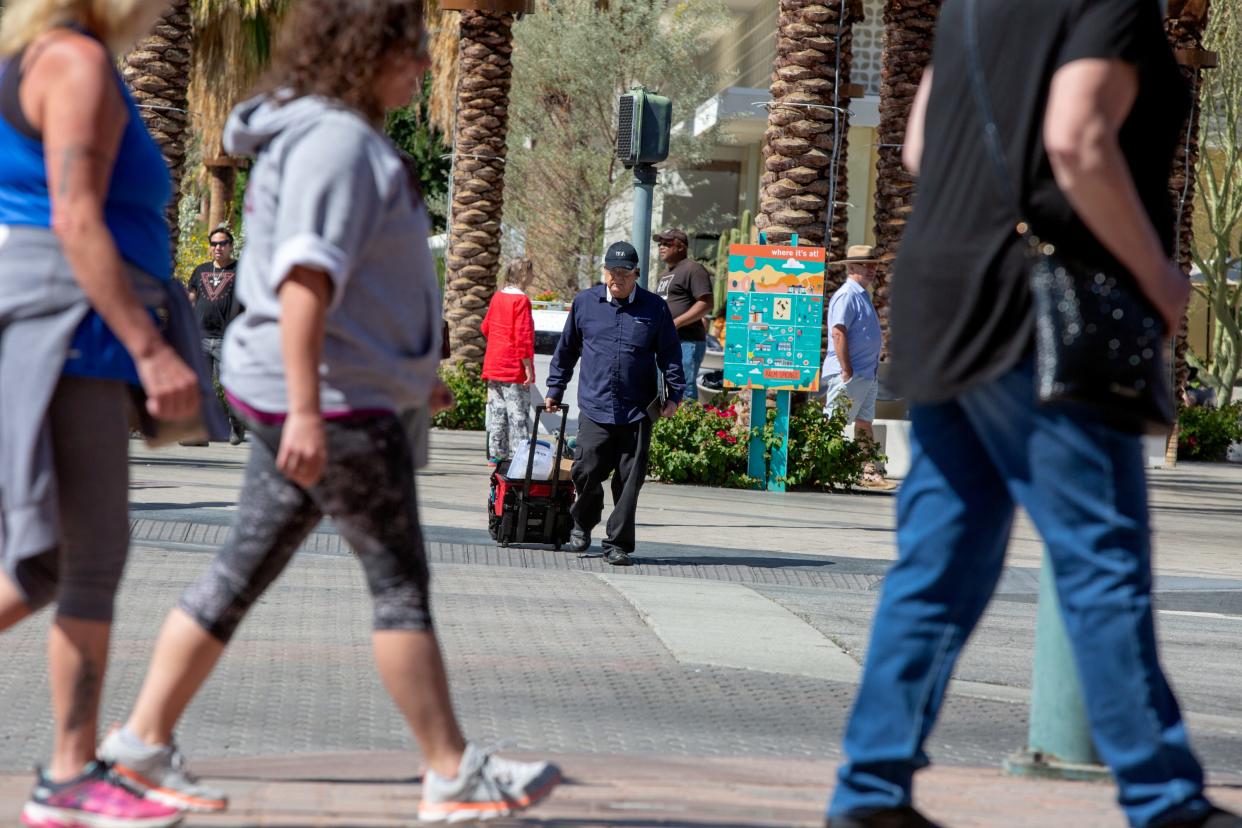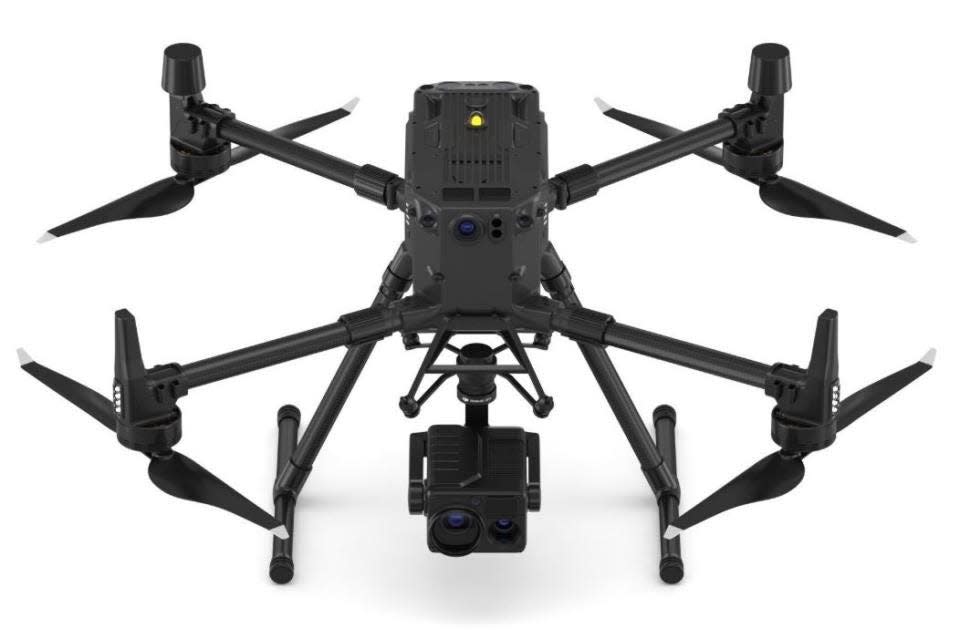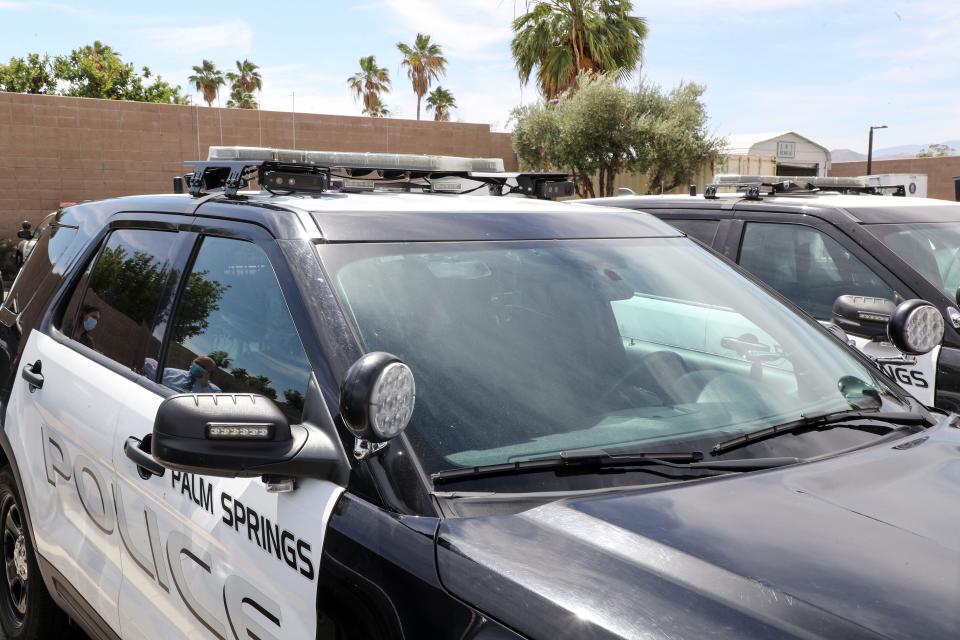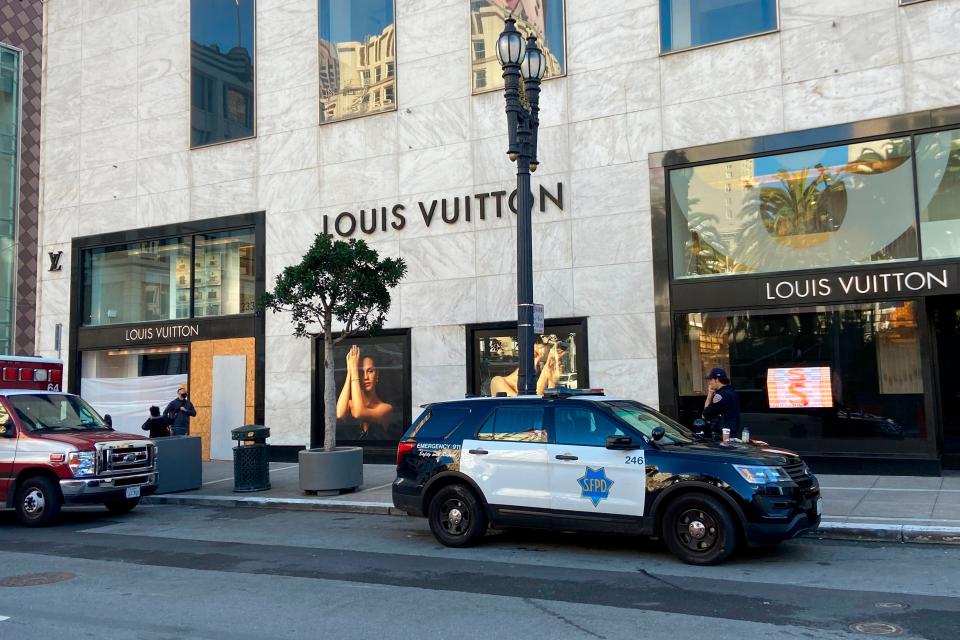Cameras, a new officer and more: Palm Springs will spend millions to fight retail theft

The Palm Springs Police Department has been awarded about $4.5 million from the state that it says will help it craft ways to reduce organized retail and car thefts, including stolen catalytic converters.
The grant, one of dozens recently given to law-enforcement agencies around the state, is believed to be the largest Palm Springs police have ever received.
Capt. Mike Kovaleff said the department applied for the grant because the city has seen sharp increases in three types of crime:
Catalytic converter thefts increased 200% in 2021 and then by 124% in 2022, and the department says it's already seen more reported in the first four months of 2023 than in all of 2022.
Car thefts have increased significantly in recent years: from 331 in 2019 to 503 in 2021, before decreasing some to 419 in 2022. Kovaleff said the city is currently on track to have more vehicle thefts than it did last year and that "the historical trend identifies a persistent issue that will need innovative and improved efforts to address." It's estimated there's been more than $12 million in damage from car-related thefts in Palm Springs over the past four years. He said the city’s relatively high rates of car thefts can partially be attributed to its tourism industry and the large number of rental cars in the city.
Retail-related thefts increased by 55% in 2021 from 2020, according to Kovaleff. He also called it "a growing and problematic issue in the city" as well as a "focal point of community and business concerns." He added that the city tends to see the most organized retail thefts either downtown or at big box and chain stores like Home Depot, Ulta and T-Mobile.
In recent weeks, several dramatic robberies have occurred in Palm Springs and other Coachella Valley cities.
The Gold Estate Jewelry Store in Downtown Palm Springs was robbed in August by two men with hammers who police say smashed a display case. That incident occurred about a month after a similar attempted heist at the Shops at Palm Desert. KESQ reported two stores were robbed by people wielding hammers at the Desert Hills Premium Outlets in Cabazon on Sept. 14.
Organized retail theft has gotten national attention in the past few years. A California law enacted in 2021 defines it as "act(ing) in concert with one or more persons to steal merchandise from one or more merchant’s premises or online marketplace with the intent to sell, exchange, or return the merchandise for value." People can also be guilty of the crime if they conspire to "receive, purchase, or possess" merchandise stolen in that way.
What will the grant money be used for?

Kovaleff said much of the money will go toward purchasing cameras, glass break tape and other equipment that is intended to protect businesses from thefts. Kovaleff said those items will likely be distributed via an application process that has yet to be developed. Here's how the department is planning to use the money:
Around $900,000 to install exterior cameras at 300 businesses that can be monitored by PSPD at the department’s real-time crime center, which also will get beefed up staffing.
Around $755,000 to install 40 additional cameras and 40 new fixed automatic license plate readers at “key locations” for both retail and vehicle theft in the city. A software system will be used to improve how police personnel are notified of in-progress crimes.
Around $660,000 for the installation of glass break tape, which makes it much harder to break windows quickly, at over 300 businesses throughout the city.
Around $600,000 to cover the cost of a new police officer and squad car so that a current experienced officer can be reassigned to oversee the new efforts to address retail and car thefts.

Around $300,000 to provide funding to a nonprofit that will provide rehabilitation to at least 15 people apprehended for theft in the city with the aim of decreasing the likelihood they commit more crime. The nonprofit will be selected via a bid process. An analysis will be conducted to see how effective the rehabilitation ends up being.
Around $160,000 to enhance and expand the department’s drone program. The city sends a drone to the scene of robberies and other crimes to gather information before officers arrive. Kovaleff said the drone can arrive while an incident is still in progress.
Around $100,000 for etching systems that will be used to mark the catalytic converters of residents who are deemed to be most at risk of theft. The department says the markings will both discourage thefts and make it easier for police to return to their owners if they are recovered.
Around $15,000 for GPS tracking devices that will be distributed to residents who are at high risk of car thefts and also used for sting operations.
Kovaleff also said a significant portion of the grant money will be spent to hold events, conduct social media campaigns and do other educational outreach about how to deter thefts.
Where is the money coming from?
The department was one of over 50 law enforcement agencies across the state that received grants totaling just over $267 million from the California Board of State and Community Corrections.
The grant program was established in last year’s state budget bill and has been touted by Gov. Newsom as “the largest ever single investment to combat organized retail crime” in the state.
“California will soon see more takedowns, more police, more arrests and felony prosecutions,” Newsom said in touting the program, adding that “when shameless criminals walk out of stores with stolen goods, they’ll walk right into jail cells."
Who else is receiving grants?
The Riverside County Sheriff's Department received a $2 million grant that will be spent specifically to address theft in Jurupa Valley. And the county's district attorney's office got just over $2 million it says it will use to create a "vertical prosecution" team dedicated to organized retail thefts. The team will include a prosecutor, an investigator, an investigative technician and a research specialist. (Twelve other district attorneys around the state got similar grants, mostly for similar amounts.)
Other recipients of the grant funds ran the gamut from major police agencies such as the Los Angeles County Sheriff’s Department and San Francisco Police Department to smaller departments in Salinas, Vacaville and Citrus Heights. The largest grant was $23.6 million to the Fresno Police Department while the smallest was for around $400,000 to the police department in Campbell near San Francisco.
No other departments in the Coachella Valley received a grant.
How much are robberies actually costing stores?

Dramatic store robberies in California’s biggest metro areas have become the subject of intense media attention, with videos showing such robberies racking up millions of views online and Newsom and other politicians decrying the problem and saying thieves need to face tougher consequences.
The question of whether such robberies are becoming more brazen and numerous has also been a flashpoint of political controversy, with some commentators saying the robberies signify California’s lax approach to crime and that liberal politics have run amok more broadly.
But while such robberies tend to generate headlines, data suggests they still make up only a small fraction of “retail shrink,” a term for the loss of inventory through theft by either employees or non-employees, as well as paperwork errors. In 2020, total shrink was estimated at $49.6 billion, with an estimated $2.1 billion being lost to organized retail theft, according to a 2021 Los Angeles Times story.
The story noted that the National Retail Federation trade group stopped publishing a breakdown of the sources of shrink in 2019, but that a 2018 survey found that 35.7% of it came from shoplifting or organized retail crime and 33.2% from employee theft. Both percentages had declined since 2015, while the amount of shrink attributable to paperwork errors had increased, reaching 18.8% in 2018.
How will we know if these new efforts are working?
The Palm Springs police captain, Kovaleff, said the city will need to plan a way to measure the effectiveness of the program over the next three years, although many of the initiatives and resources the grant is funding will be permanent. The funds include money to contract with an independent evaluator and analyst that will help develop that plan, monitor and analyze how the funds are being used and create a final report at the conclusion of the three years.
Paul Albani-Burgio covers breaking news and the city of Palm Springs. Follow him on Twitter at @albaniburgiop and email him at paul.albani-burgio@desertsun.com.
This article originally appeared on Palm Springs Desert Sun: Palm Springs police get millions to fight organized retail theft

